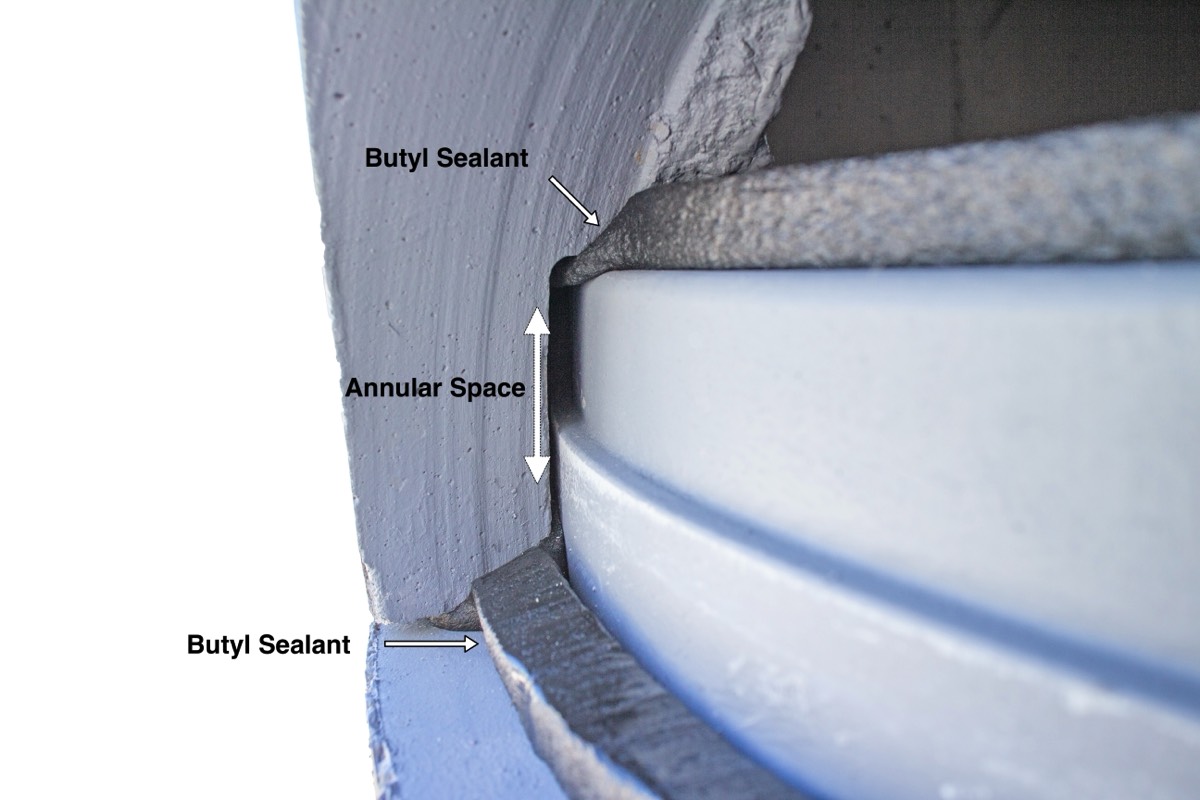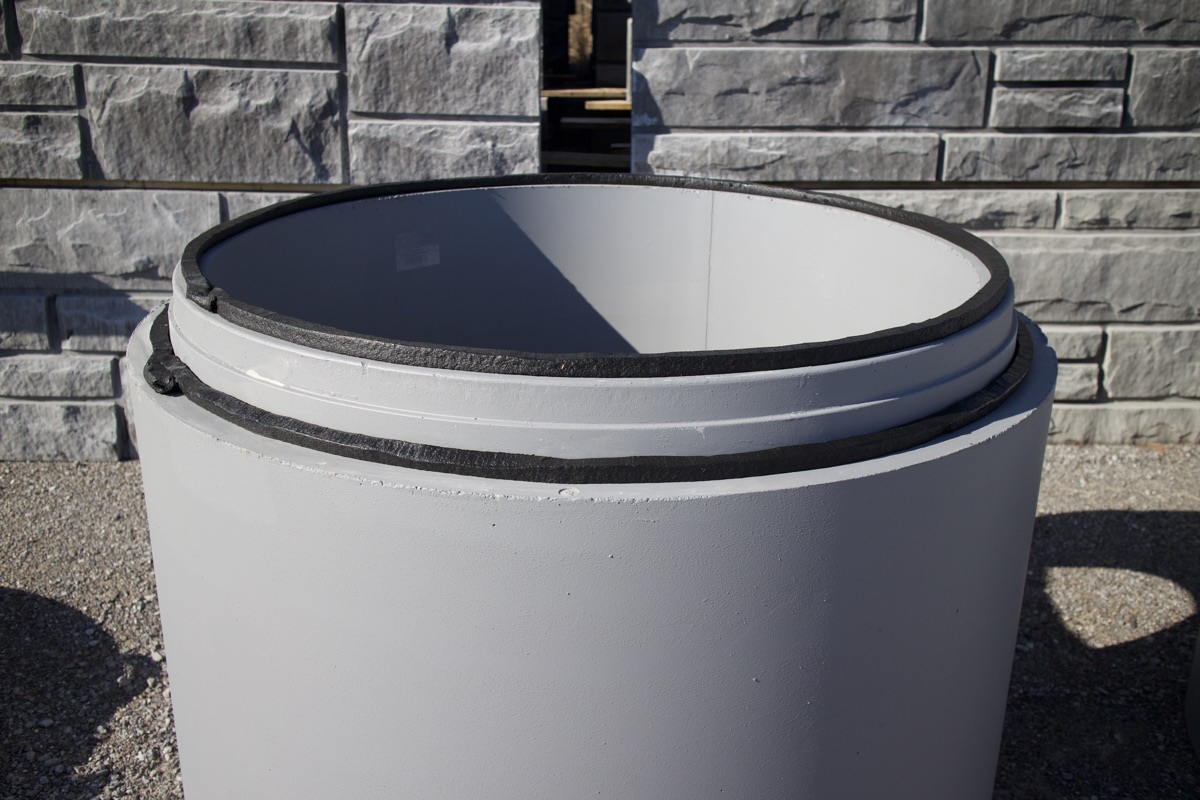Butyl Sealant in the Joint
What happens in the joint
Download manhole frame and cover, grade ring, and mastic detail sheet.
What happens in the joint
Download manhole frame and cover, grade ring, and mastic detail sheet.
Our inquiring precast minds really wanted to know. How is sealant compressed in the joint of a manhole? To answer this question, we manufactured a test manhole and performed the test during the hot Tennessee summer.
Procedure
We placed the sealant on both the lower and upper levels of the joint on a 48” diameter manhole base and riser. When applying, we were careful to place the sealant toward the center of the wall. The sealant needs to wedge itself between the walls that make up the vertical annular space in addition to the top and bottom of the joint. Applying in this way allows your sealant to perform its best and ensures a tight seal.
We cored three semicircles into the riser where it sat on the base. We even placed a flat top slab lid on the riser to increase the weight. Then we monitored the sealant throughout the hot Tennessee summer and let the manhole sit for an entire year.
Findings
The sealant deformed to its final form within an hour. Any further deformation, if any, was not evident by visual inspection one year after the application. The sealant did not fill the annular space. It just flattened out and moved no more than half an inch in each direction into the annular space, which left most of the annular space open.
We used an industry leading concrete sealant, ConSeal CS-102, for our test because that is the sealant we use in our production process and trust that product to make our concrete products watertight.
Procedure
We placed the sealant on both the lower and upper levels of the joint on a 48” diameter manhole base and riser. When applying, we were careful to place the sealant toward the center of the wall. The sealant needs to wedge itself between the walls that make up the vertical annular space in addition to the top and bottom of the joint. Applying in this way allows your sealant to perform its best and ensures a tight seal.
We cored three semicircles into the riser where it sat on the base. We even placed a flat top slab lid on the riser to increase the weight. Then we monitored the sealant throughout the hot Tennessee summer and let the manhole sit for an entire year.
Findings
The sealant deformed to its final form within an hour. Any further deformation, if any, was not evident by visual inspection one year after the application. The sealant did not fill the annular space. It just flattened out and moved no more than half an inch in each direction into the annular space, which left most of the annular space open.
We used an industry leading concrete sealant, ConSeal CS-102, for our test because that is the sealant we use in our production process and trust that product to make our concrete products watertight.





